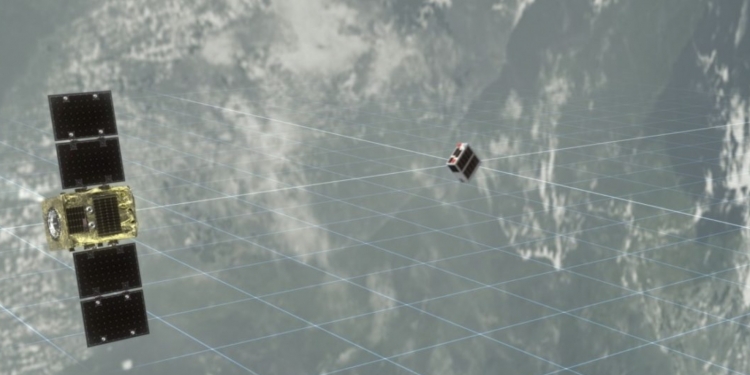The European Space Agency (ESA) announces that they’re working with orbital debris removal company Astroscale and satellite operator OneWeb to remove the cluster of space debris orbiting Earth. They will start testing the first commercial “servicer” prototype—ELSA-M—and plans to launch it in 2024.
“Responsible space is central to our mission at OneWeb and we are committed to sustainable practices in all the environments in which we operate. The development of the ELSA-M servicer prototype is another significant milestone towards a responsible approach to space, ensuring that our satellites can be de-orbited and that the low Earth orbit environment is protected as a natural and shared resource,” said Massimiliano Ladovaz, Chief Technology Officer at OneWeb.
Right now, there are two options for removing end-of-life OneWeb satellites from their orbits at the end of their five to six years of service. Each of the options has enough fuel to be able to actively deorbit at the end of its useful lifetime. But if they fail to deorbit, they have also been built with either a magnetic or a grappling fixture—so that a servicer spacecraft could eventually collect them.
ELSA-M is the answer, and the ESA is investing EUR 14.8 million (about RM69.4 million) in the partnership. By removing dead satellites from the Earth’s orbit, OneWeb would be able to launch more telecommunications satellites as part of its Sunrise Program—a project that would be able to “deliver varied content to users in Europe and, eventually, to nearly all major cities around the world”.
Astroscale also plans for the project to be a commercial service for clients that operate satellite constellations in low Earth orbit. The service will make in-orbit servicing “part of routine satellite operations by 2030”.
“With thousands of satellites already in orbit and thousands more being launched every year, addressing the issue of space debris and finding new ways to remove defunct spacecraft and other types of space junk is of ever-increasing importance – to both reduce the cost of debris damage for satellite operators and ensure space is safe and sustainable,” said UK Science Minister George Freeman.
Space debris has always been a huge problem, as there are reportedly over 27,000 pieces of it in Earth’s orbit. Seven out of the nine satellites launched by Malaysia are also now inactive and are in the end-of-life phase.
Initially, I thought that ESA would be removing the dead satellites to clear up the clutter for the good of the space environment. But as good as that sounds, I couldn’t help but focus on how it’s because OneWeb plans to “launch more telecommunications satellites”. Clearing the debris to make room for more doesn’t seem to environment-focused, but it certainly is a better deal than tossing out more satellites without dealing with the debris at all.
[ SOURCE, IMAGE SOURCE ]








